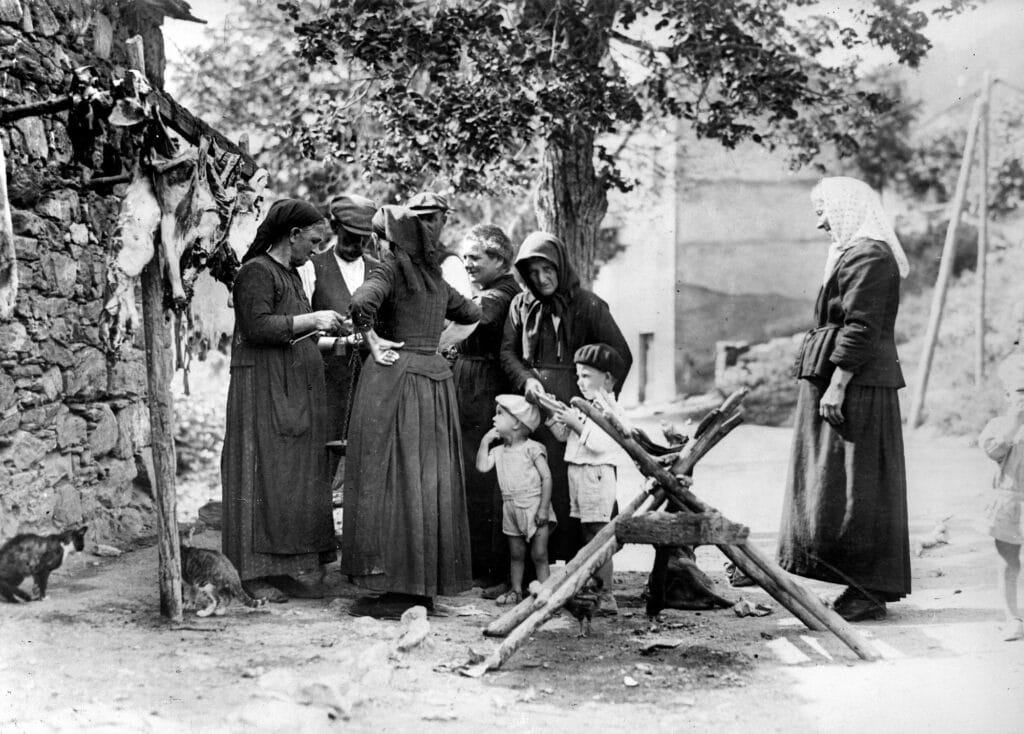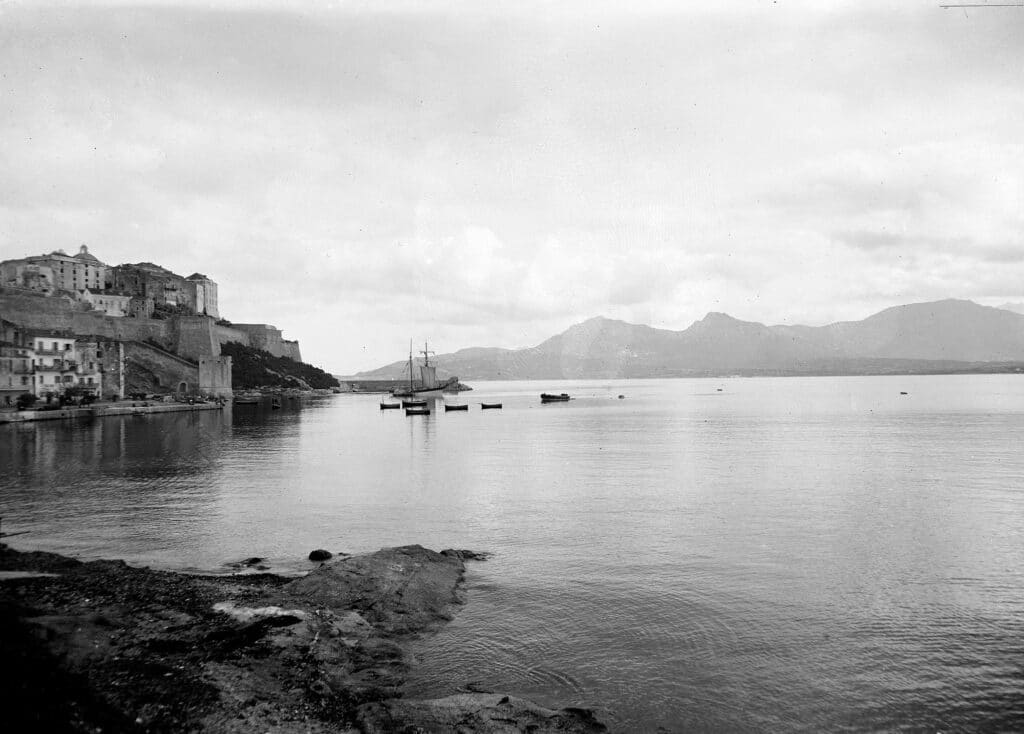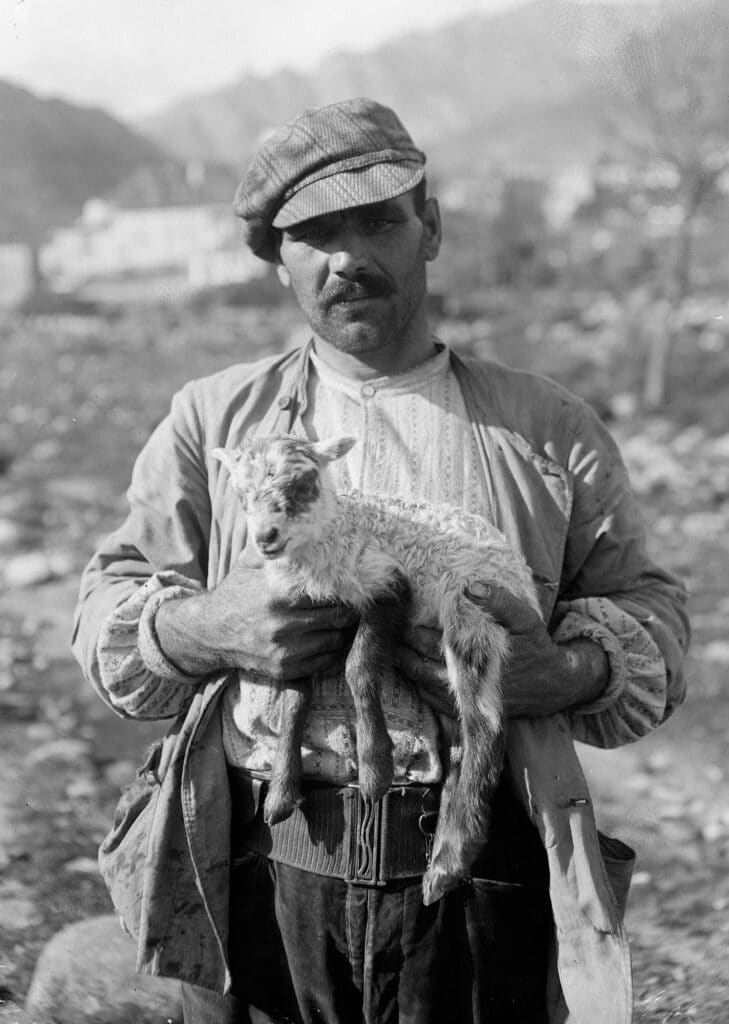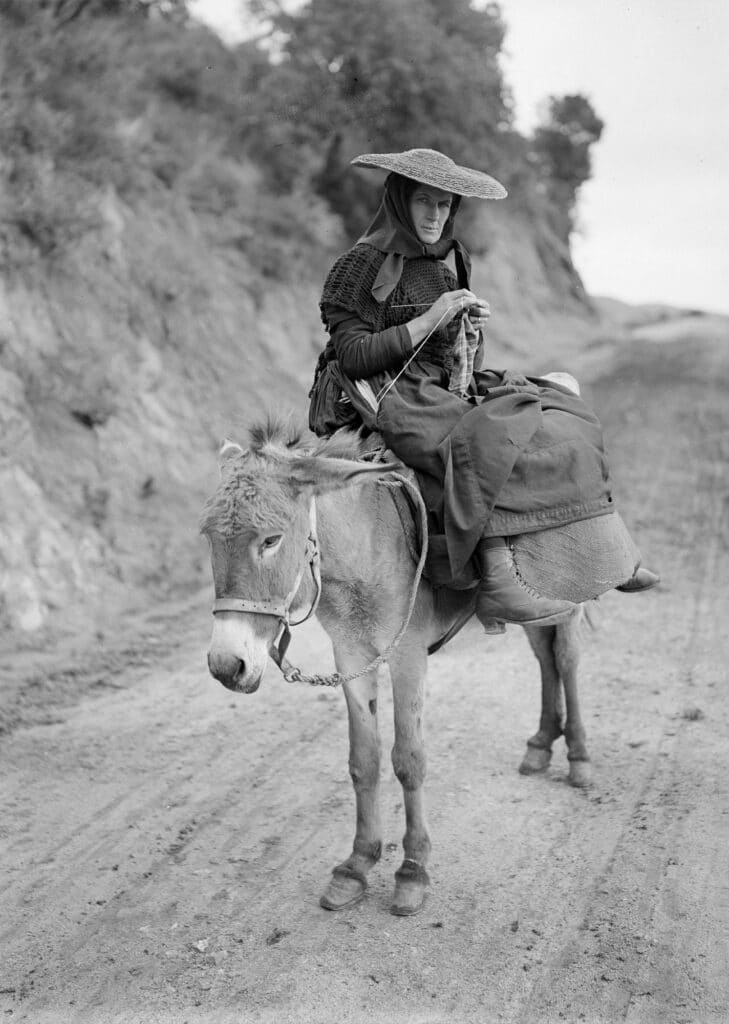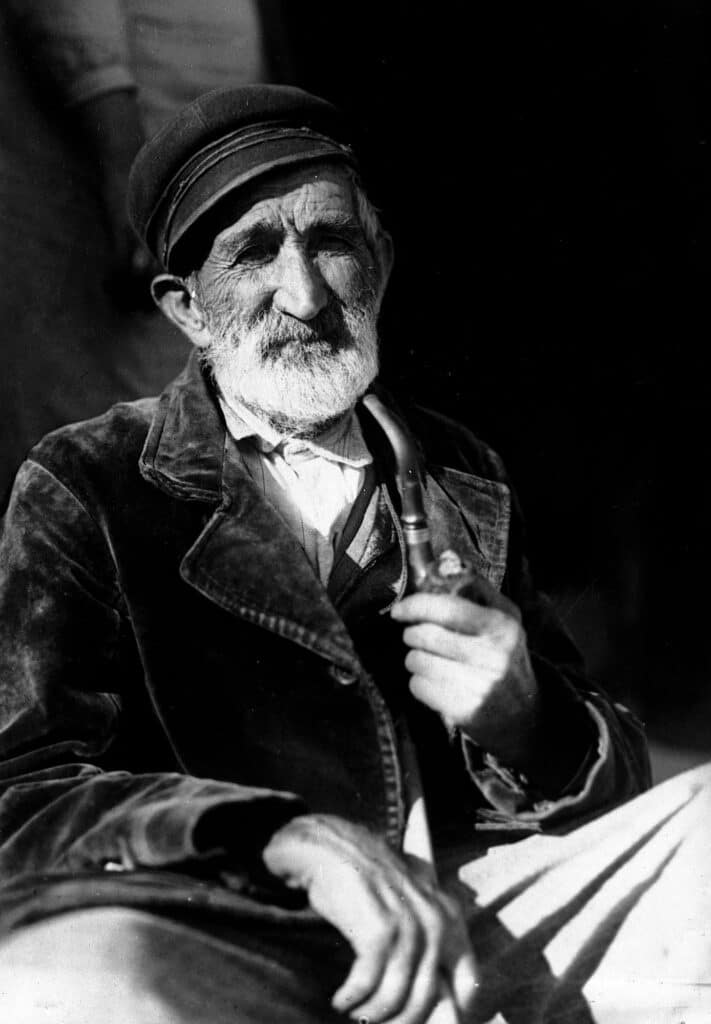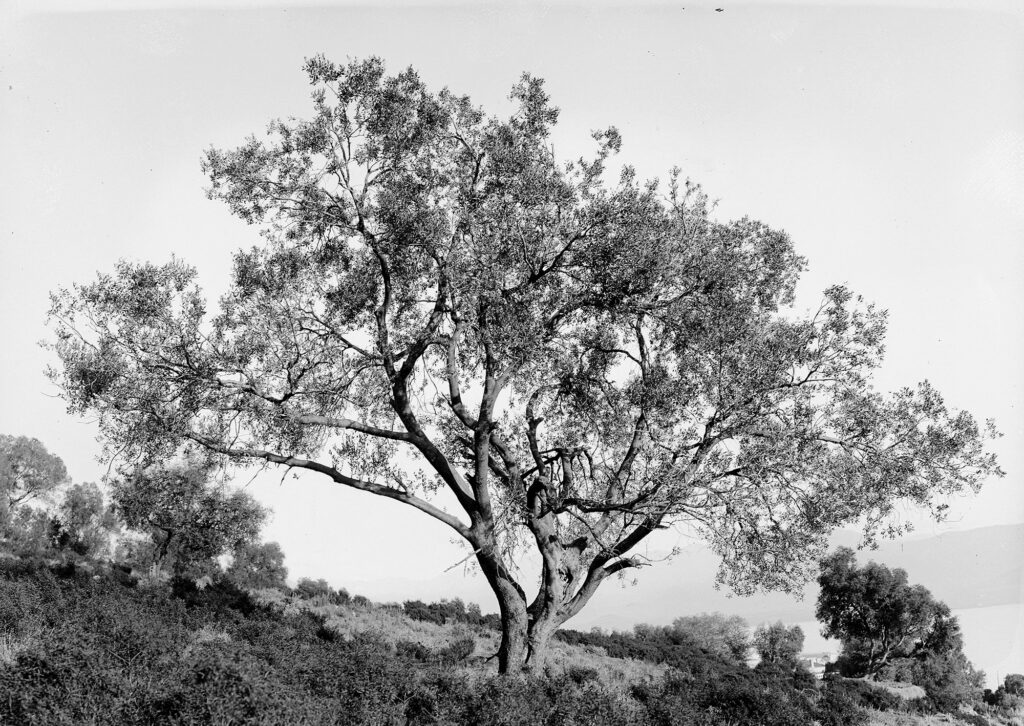We have little information about the images Jacques Boyer took in Corsica in the early twentieth century; we know that he made more than one trip, returning to the island maybe several times. A photographer and “science publicist,” as he called himself, Jacques Boyer is known to have extensively photographed Paris, its daily life, and small trades, for over forty years, from the beginning of the twentieth century through the 1950s. We discern the same interest in his Corsican images. The Agence Roger-Viollet holds the image rights as well as houses the Jacques Boyer collection (with over 35,000 negatives and 6,000 vintage prints).
When Jacques Boyer arrived on the island in 1911, “Corsica’s was struggling to balance its budget: its liabilities greatly outweighed its assets,” noted historian Robert Colonna d’Istria in his Histoire de la Corse. “The assets included advances in education (in 1914, the number of high school graduates, in relation to the total population, was one of the highest in France); there was a railroad which, for better or worse, finally connected Ajaccio and Bastia. (…) Among the liabilities there was the economic slump, massive emigration, social corruption under an unscrupulous, rudderless political class, and, lastly, malaria.”
In 1908, Prime Minister Georges Clemenceau painted a stark picture of the state of the island: “There is no industry, no trade, no agriculture … Neither Brittany nor Hautes-Alpes, or any other country in Europe, can give an idea of Corsican misery and destitution.” It was in this context that Boyer found himself in Corsica. He crossed the island, traveling along the coast, all the way to Ajaccio. He photographed shepherds, lobster fishermen, peasants, an open-air butcher shop, and a Good Friday Procession.
In addition to his portraits of people, he immortalized the land in a way that still captivates our imagination a hundred years later. We go back to the rocks, the cliffs, and the olive tree. Sir Gilbert Elliot, Viceroy of the Anglo-Corsican kingdom between 1794 and 1796, said that Corsica “is an enigma to which no one is sure to possess the key.” Boyer’s photographs have captured this enigma. Yet, even with his repeated visits, the photographer has not found the key, either; but his black-and-white images of Corsicans and their island are a precious clue for anyone still attempting to unlock the mystery.
Suggested reading:
In French:
Robert Colonna d’Istria, Histoire de la Corse, des origines à nos jours, Tallandier, 10€.
In English:
Dorothy Carrington, Granite Island: A Portrait of Corsica, Penguin, 1971/2008, £9.99.

